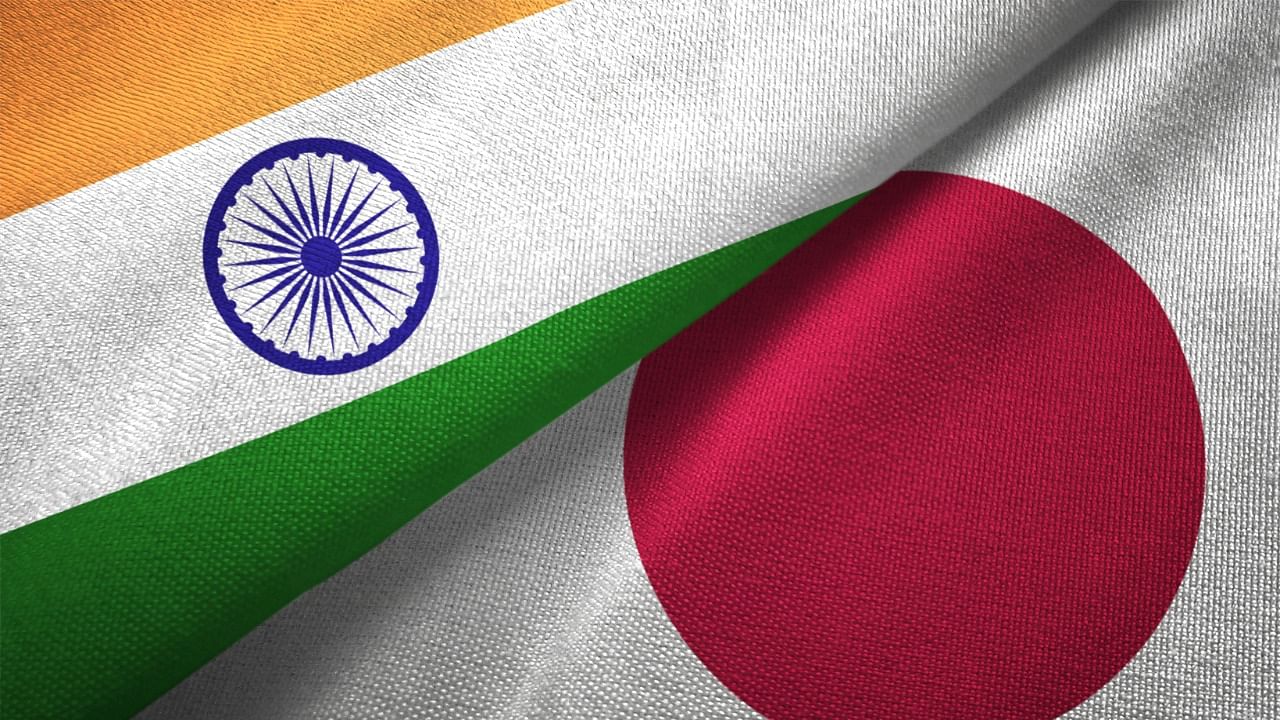
India's relationship with Japan is arguably its most crucial foreign commitment within the evolving Asian security and economic architecture.
The recent summit meeting on the sidelines of the UN Security Council between Prime Minister Narendra Modi and his then-Japanese counterpart Yoshihide Suga gave a significant fillip to the bilateral by highlighting a joint commitment to "free and open" Indo-Pacific. This is the baseline of the strategic relationship. Given that the Japanese Navy is arguably the most formidable force in terms of technological superiority and drilling in its littoral, it was a clear warning to China that the two navies intend to work even more closely together.
The meeting was unusual in its tough wording, which also said that the two countries oppose "economic coercion and unilateral attempts to change the status quo by force in the East and South China Seas". The relationship was further affirmed when PM Modi called up the new Japanese prime minister, Fumio Kishida, on Friday. The new Japanese PM is a known hawk on his China policy and is likely to double Japan's defence budget beyond the traditional one per cent of its GDP. Media reports said that the two leaders spoke of "elevating the Japan - India special strategic and global partnership to a new level", and Modi extended an invitation to visit India.
The other highlight of the two PM meeting was in the infrastructure sector. India is working with Japan to offer a regional counter on both the One Belt One Road by China and the Chinese strategy of surrounding India with the so-called string of pearls. China is pouring billions of dollars attempting to encircle India through strategic thrusts by developing the port of Gwadar in Pakistan, Hambantota in Sri Lanka and the Kyaukphyu port in Myanmar. But these are mainly debt-driven projects and Chinese debt rates are at around 7 per cent for these projects.
In contrast, the Japanese marquee projects in India, including the metro rail, the dedicated Delhi-Mumbai freight corridor and the bullet trains between Delhi and Mumbai and Delhi and Varanasi, are at just over 1 per cent interest rate. The joint development of projects by India and Japan in third countries was also reportedly finalised at the summit meeting with a new shipping terminal at Colombo as the first port of call. This is an old partnership that began with the Indo-Japanese joint development of an LNG terminal in 2018 in Sri Lanka, but now there is political capital at the highest level to push several projects.
Bangladesh, too, has been on the radar of the two countries, with Japanese trading house Marubeni and India's Larsen & Toubro building the 400-MW Bibiyana-III Gas Based Combined Cycle Power in 2016. Both countries are reportedly planning to co-develop at least three other power projects in Bangladesh. In 2018, India and Japan built a rail system constructing Bangladesh's first mass rapid transit.
The politico-military dimension of this relationship is also very significant. In September 2019, an "Acquisition and Cross-Servicing Agreement" was signed that allows the two countries' militaries to exchange supplies and services on a reciprocal basis and visits to each other's ports. The military significance is that the islands of Andaman and Nicobar are vital airbases and naval anchors that can cut off the access of the PLA navy beyond the South China Sea - especially with the Japanese Navy in the flank acting in an inter operatable manner. With Japan now angling for nuclear-powered submarines and India already in possession of these assets, going beyond the South China Sea and into the Indian Ocean could run into a gathering storm over the next decade for the PLA navy.
For the India-Japan relationship, things look set for the next level. However, India and Japan need to bring their bilateral trade and investment relation to a higher stage for sustained global heft. Japan is a vital partner in infrastructure development for India, and its direct aid is a critical component of India's social security goals. India has been the largest single recipient of Japanese overseas development assistance since 2003, and the total disbursal is three trillion yen. Yet the bilateral trade has lagged, as has foreign direct investment by Japan.
India and Japan signed the comprehensive economic partnership agreement (CEPA) in 2011, aimed at eliminating tariffs on 90 per cent of Japanese exports to India, such as auto parts and 97 per cent of imports from India, including agricultural and fisheries products. Japan's exports to India since the agreement have gone up from $8.3 billion in 2010 to US$ 12.7 billion in 2018, but India's exports to Japan have remained at the same level in 2019 as they were in 2010. This has resulted in a massive mismatch and a ballooning trade
deficit of about $3.5 billion in 2019. While some marquee Indian firms have huge Japanese investments, such as Suzuki, Oyo and Zee entertainment, overall Japanese investment in India has been tepid. Indeed, FDI inflow into India from Japan fell from a peak of about $29 billion in 2016-17 to less than $20 billion in 2018-19 just before the pandemic.
India and Japan need to revitalise the relationship of the two most vibrant free-market maritime democracies for their own sake and meet the threat from an aggressive China. The economic relationship would be a good place to start.
(The writer is a journalist)
Disclaimer: The views expressed above are the author's own. They do not necessarily reflect the views of DH.
Watch latest videos by DH here: